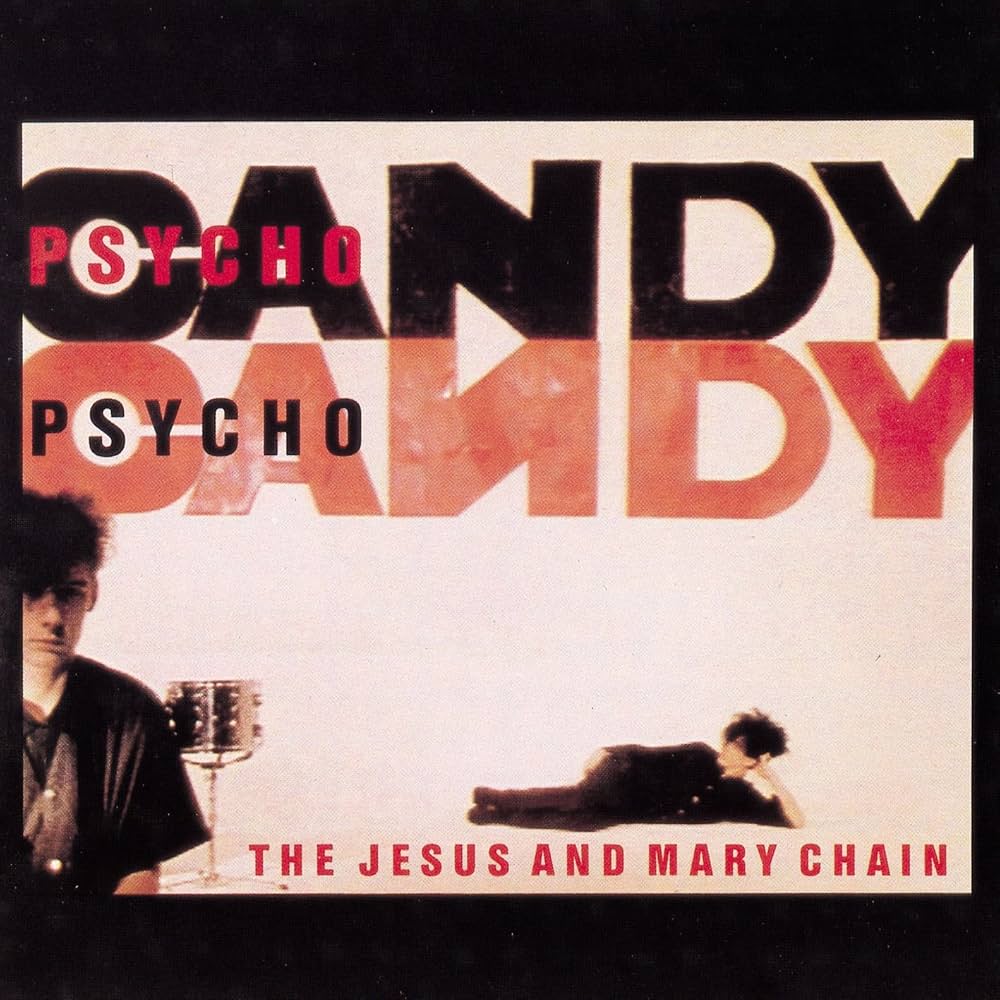
Letter From the Publisher
Published on Nov 29, 2025
Giving Thanks
Published on Nov 27, 2025
Garfield, Odie, and the Dead Vinyl Years
Published on Nov 4, 2025
How Doo Wop Saved Me
Published on Nov 2, 2025
More Liner Notes…
Featured Essay: The Jesus & Mary Chain’s “Psychocandy” at 40 Years Old
by Chase Harrison

While the world has been focused on two temperamental brothers from the United Kingdom with a love/hate relationship in 2025, a different, mercurial pair, Jim and William Reid from Scotland, celebrate the 40th anniversary of their groundbreaking album, Psychocandy. The Jesus & Mary Chain’s debut has arguably had a greater impact on modern guitar music than any album since The Velvet Underground & Nico (which, of course, also heavily inspired this album’s sound, style, and substance) or the Jimi Hendrix Experience’s Are You Experienced?.
An old joke in music circles goes that the Jesus & Mary Chain have only ever written two different songs, but they do it so well, it’s never mattered. One such song kicks off the album:the noisy but gorgeous classic, “Just Like Honey,” which enjoyed a second life after featuring prominently in Sofia Coppola’s “Lost in Translation.” The opening drums of “Sowing Seeds” and “Cut Dead” sound nearly identical to “Just Like Honey,” all of which serve as an homage to Hal Blaine’s drums on the Ronettes “Be My Baby,” one of those clear, aforementioned influences. “In a Hole’s” abrasive, opening, screeching guitar mirrors the one on “Taste the Floor,” the loudest song on the record. The plaintive Beach Boys and Shangri-Las-inspired vocals that foreground the harsh Einstürzende Neubauten-inspired, feedback-soaked guitars reciting lyrics about love and loss have inspired musicians from My Bloody Valentine and Dinosaur Jr. to The Pains of Being Pure at Heart and A Place to Bury Strangers. As drummer Bobby Gillespie put it, “Jim and William had a vision for their sound – mixing beautiful, summery pop songs with violent, chainsaw feedback and psychotic guitars.” All 1:41 seconds of “Taste of Cindy” are the most indicative of these warring (or harmonious, depending on your tastes) influences. The Mary Chain memoir Never Understood refers to “offensive, loud, screeching guitars” set against “bittersweet melodies.” It’s this tension and contradiction that made the band’s early music so compelling and exciting.
Around the time of release, JAMC famously took on an abrasive public-facing image to match their instrumentals. They openly railed against the recently canonized Joy Division and their short, 15-minute live shows famously devolved into riots (though this may be overstated as mythmaking started to take shape). During the album’s press run, they conducted a snotty, dismissive interview while an unnamed couple made out on a couch beside them. In another, when asked why people are excited about them, Jim Reid spoke plainly, “‘cause we’re so good. Because we’re so much better than everybody else. Because so many other people are complete rubbish.” Working-class introverts, the Reid brothers often claimed they wanted to be the next Beatles or the latest hugely popular arena band that played Top of the Pops. It was always hard to tell how firmly tongue was wedged in cheek, but Psychocandy’s melodies and their obsession with Phil Spector and ‘60s girl groups point to at least some semblance of sincerity. Two years later, they’d go on to record (an excellent) cover of the Beach Boys’ “Surfin’ USA.” According to Zoe Howe’s biography, Barbed Wire Kisses, Jim Reid said, “I don’t want to be wearing a Fair Isles cardigan playing in front of three mates in a pub! I want to be like Marc Bolan!”
Still, despite their popstar goals, there is a clear working-class sensibility about the album. Douglas Hart famously played a two-string bass, explaining, “That’s the two I use. I mean, what’s the fucking point in spending money on another two?” Similarly, Bobby Gillespie – who’d ultimately become the most famous member of the band as head of Primal Scream – played just a two-piece drumset while standing up, a la Moe Tucker of The Velvet Underground. “I used to play dustbin lids as drums. Two dustbin lids, and smash them like drums. My Mary Chain drums were the same, except these were trash cans.” On top of this rhythm section, the songs were fleshed out with Jim and William Reid’s 3-chord songs. An entirely new genre and sound was borne out of a working-class resourcefulness. After all, NME reviewed it because Jim told journalist David Quantick, “If you don’t, you’ll be pretending you were there in five years’ time.”
At 14 tracks, the album never loses steam, alternating between slower love songs (“Sowing Seeds”), high-powered, feedback-driven post-punk (“In a Hole,” “Inside Me”), and some that strike a balance between the two styles (“Something’s Wrong”). The songs are tight but effective, as four of the centerpieces add up to just 11:19 of the album’s runtime. While all the singles are great, the standout track is “The Hardest Walk,” the nearly 3-minute fourth track. It’s often what I’ll send to people trying to get into the band. The bouncy bassline and propulsive three-chord riff give way to a bubblegum pop melody with blasts of aggressive feedback between verses. It’s one of their more upbeat songs on the surface, but that fascinating contradiction becomes clearer as you hear the gutting, closing refrain depicting a breakup:
Don’t want you to want me
Don’t want you to need me
Don’t want you to need me
Don’t want you to need me
And I walk
A quick scan at other albums released in 1985 will bring up incredible and seminal works such as Promise by Sade, Hounds of Love by Kate Bush, Tim by The Replacements, Meat is Murder by The Smiths, Bad Moon Rising by Sonic Youth. None of them come quite close to sounding like what the Mary Chain were doing at the time (Sonic Youth comes closest), though, a direct response to the glossy, synth-based music of the era. The nearest contemporary to the JAMC was arguably Spacemen 3, whose first record would come out the following year (and would equally inspire the shoegaze to come from a psychedelic angle). My Bloody Valentine’s first EP arrived in 1985, but their innovative, Psychocandy-indebted sound didn’t begin to fully crystallize until their debut album in 1988. While I’d argue the Mary Chain hasn’t released a bad album, their debut remains their pinnacle (though the follow-up, Darklands, came close to reaching the same heights). In the years to follow, we’ve seen many bands follow and further their blueprint, from Slowdive to Times New Viking to The Smashing Pumpkins, and the recent shoegaze revival (Nothing, TAGABOW, Knifeplay, etc.) shows their influence still remains strong on both popular and underground music worldwide. They may have never played arenas, but their legacy was solidified as soon as Psychocandy was released.
Born in Durham, NC and raised outside of Baltimore, MD, Chase has spent the last 18 years in Philadelphia, PA and Brooklyn, NY. He holds a Master of Advanced Studies in American Media & Popular Culture and currently works as a Content Manager with past experience in the film, food, and beverage spaces. He has also performed as a DJ and occasionally makes electronic music under the name Cult Posture. You can find him on Instagram or Letterboxd.

